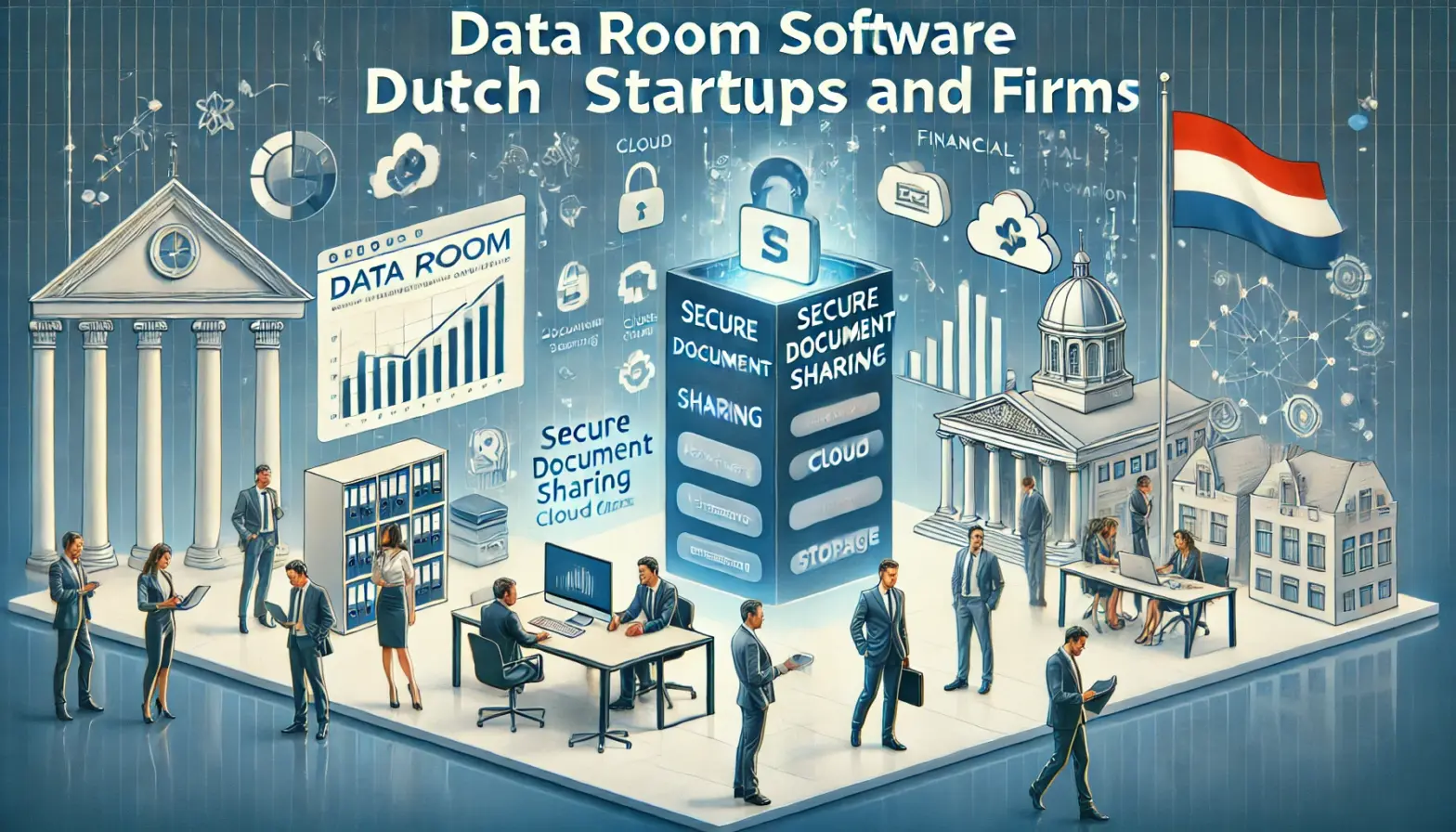Data rooms have become essential tools for Australian businesses managing sensitive information, yet many organizations struggle to understand their true cost. Most companies budget insufficiently for virtual data rooms because pricing structures are notoriously complex and often include hidden fees. A recent survey found that 67% of Australian businesses underestimated their VDR expenses by at least 30%.
Understanding the actual costs of virtual data rooms like https://australian-dataroom.net/ is crucial for proper financial planning. Different pricing models—from per-page to subscription-based systems—can significantly impact your bottom line. Additionally, factors like business size, industry requirements, and specific features needed will affect what you ultimately pay. This comprehensive guide breaks down everything Australian businesses need to know about VDR pricing in 2025, helping you make informed decisions while avoiding unexpected expenses.
Understanding Virtual Data Room Costs in Australia
Virtual data rooms have transformed how businesses handle sensitive information across Australia’s vast geographical expanse. These specialized platforms offer far more than simple document storage, creating secure environments for complex transactions and sensitive business operations.
What is a virtual data room?
A virtual data room (VDR) is a secure online repository designed for storing, sharing, and managing confidential documents and sensitive information. Unlike standard file-sharing services, VDRs provide enhanced security features specifically tailored for business transactions and compliance activities.
These digital platforms evolved from traditional physical data rooms, which once required interested parties to travel to a specific location to review sensitive materials. Modern VDRs offer robust security coupled with accessibility, functioning as:
- Secure warehouses for confidential documents during complex deals
- Collaborative platforms for business teams across multiple locations
- Protected environments for sensitive business operations
- Comprehensive tools for managing due diligence processes
The core value of a VDR lies in its security architecture. Most reputable providers offer military-grade encryption, multi-factor authentication, and granular permission controls that allow document owners to restrict who can view, download, print, or edit specific files. Moreover, detailed audit trails track every interaction with documents, creating accountability and transparency throughout sensitive processes.
For Australian businesses, these platforms have become essential tools for managing everything from mergers and acquisitions to board communications and financial transactions. VDRs maintain detailed logs of user activity, providing visibility into who accessed specific documents and when—a critical feature for regulatory compliance and dispute resolution.
Why Australian businesses need VDRs in 2025
Australian companies face unique challenges that make virtual data rooms particularly valuable. The geographical isolation of Australia means businesses often conduct transactions with partners across vast distances and different time zones. VDRs effectively bridge this distance by enabling instant, secure document sharing 24/7 from anywhere in the world.
Furthermore, Australian regulatory requirements have become increasingly stringent, particularly regarding data privacy and security. VDRs offer sophisticated permission controls and audit capabilities that help demonstrate compliance with privacy requirements while maintaining efficient information flow during transactions.
The adoption of hybrid work models following COVID-19 has further cemented the need for secure, remote access to sensitive documents. Australian professionals have become more mobile and tech-savvy, often preferring to contribute to projects using smartphones or tablets with adapted VDR applications.
Cost efficiency remains another compelling factor. Traditional methods of data management can be prohibitively expensive, particularly when considering expenses like physical document printing, shipping, and secure storage. Virtual data rooms help Australian businesses save significant costs by eliminating these physical requirements.
As VDR technology pricing is typically based on data volume, businesses can optimize their expenditure by working with specialists who know how to streamline data room size—potentially resulting in substantial cost savings. Through strategic relationships with VDR technology suppliers and volume purchasing power, Australian businesses can access market-leading VDR technology at competitive rates.
Consequently, as business complexity increases and regulatory scrutiny intensifies in 2025, Australian organizations require robust solutions specifically designed for their market conditions and compliance requirements. The technical infrastructure of Australian data rooms is uniquely configured for the country’s business environment, making them essential tools for successful operations in the coming years.
Breaking Down VDR Pricing Models
Understanding the pricing structures of data rooms is crucial for making informed decisions. Australian businesses face several distinct pricing models, each with unique advantages and limitations depending on your specific needs.
Per-page pricing explained
Per-page pricing represents the oldest pricing approach in the data room market, dating back to the era of physical data rooms. Under this model, providers charge for each page uploaded to the system, with rates typically ranging from AUD 0.61 to AUD 1.53 per page.
This pricing structure works well for small and medium businesses with minimal document requirements. However, as your documentation needs grow, costs can escalate rapidly. For larger projects, per-page pricing can reach between AUD 30,579.80 to AUD 61,159.61, making it potentially prohibitive for extensive transactions or long-term projects.
Per-user pricing explained
The per-user pricing model bases costs on the number of individuals accessing your data room. Standard user licenses typically cost between AUD 22.93 and AUD 38.22 per person monthly. Administrative users, who have greater control over the platform, often cost substantially more—between AUD 152.90 and AUD 382.25 per admin user.
This approach is ideal for small companies handling large document volumes but with limited team members. The structure offers predictability when you have a fixed number of participants, but becomes less cost-effective when you need to frequently add new users during transactions.
Storage-based pricing explained
Storage-based pricing charges according to the total data volume stored in your virtual data room. Providers typically charge between AUD 91.74 and AUD 117.73 per gigabyte monthly, with some charging as much as AUD 114.67 per GB for overages.
This model suits businesses that don’t work with heavy media files like videos or high-resolution images. The pricing structure allows unlimited file uploads, provided your total storage remains within purchased limits. Additional storage can usually be purchased as needed, though often at premium rates.
Flat-rate subscription models
Flat-rate pricing has become increasingly popular among Australian businesses seeking predictability. These fixed monthly or annual fees typically range from AUD 611.60 to AUD 1,528.99, with some enterprise plans reaching up to AUD 152,900 monthly.
This approach typically includes:
- Predetermined storage allocations
- Unlimited or high user limits
- Comprehensive feature access
- Predictable monthly expenses
The primary advantage of flat-rate models is their financial predictability—teams can focus on their projects rather than monitoring usage metrics. For businesses managing multiple simultaneous projects or those with unpredictable timelines, flat monthly fees eliminate concerns about data volume, user count, and time-based overages.
According to recent trends, many modern data room providers are transitioning away from legacy per-page pricing toward these more predictable flat-rate structures. This shift acknowledges the changing needs of Australian businesses and the decreasing cost of cloud storage technology.
Each pricing model presents distinct tradeoffs between cost, flexibility, and predictability. Your optimal choice depends on your specific transaction type, team size, document volume, and project duration.
Hidden Costs Australian Businesses Should Watch For
Behind the advertised rates of virtual data rooms lies a network of potential hidden costs that can drastically impact your bottom line. Traditional VDRs often employ variable pricing models with concealed fees that result in significantly higher-than-expected final invoices.
Extra storage fees
Storage overages represent one of the most common unexpected expenses for Australian businesses. Initially, VDR providers offer a set storage allocation, but charges accumulate rapidly when exceeding these limits. Overage fees can reach as high as AUD 114.67 per GB, substantially increasing your expenses for data-heavy projects.
Despite attractive upfront costs, many providers strategically set low storage limits with the expectation that clients will exceed their allocations. This practice creates a profitable revenue stream through overages while maintaining competitive advertised rates.
In fact, storage-based pricing becomes particularly problematic for projects involving large files such as high-resolution images or videos. To avoid these costs, carefully evaluate your storage needs before selecting a provider and regularly monitor usage throughout your project.
Additional user charges
User-based overage fees present another significant hidden expense. Most providers allocate a predetermined number of user licenses, with additional charges applying when exceeding this limit. The average price per standard user typically ranges between AUD 25.99-38.22, while administrative users cost substantially more—between AUD 152.90 to AUD 382.25 each.
These charges frequently remain buried in service agreements until your invoice arrives. To illustrate this impact, consider that adding just five administrative users to a project could increase your costs by up to AUD 1,911.25 monthly.
Some providers offer unlimited users even in their basic plans, although data limitations typically still apply 5. Before signing any agreement, thoroughly examine user allocation policies and calculate potential costs based on your maximum anticipated user count.
Premium support costs
While basic customer support typically comes included with any virtual data room pricing plan, the quality and responsiveness vary dramatically between tiers. Premium support options—often necessary during critical transactions—can add substantial costs to your base package.
Higher-tier support typically includes:
- 24/7 multilingual support via email, chat, and phone
- Faster response times (15 minutes versus 30 minutes)
- Dedicated project managers
- Priority telephone assistance
These enhanced support services generally require upgrading to more expensive subscription tiers rather than being available as à la carte additions, effectively forcing businesses to pay for unwanted features simply to access necessary support.
Custom branding and setup fees
Customization expenses often remain undisclosed until late in the purchasing process. These can include:
- Custom branding and white-labeling (logo, colors, domain)
- Custom domain integration for documents and data rooms
- Single sign-on implementation
- Custom terms of use and NDA creation
- Data room setup assistance
Furthermore, some providers charge a premium for professional services like customized team training. Initially, data room setup is generally free with subscription purchase, yet premier services where providers handle operational tasks during project setup may incur additional fees.
To avoid unpleasant surprises, request a comprehensive breakdown of all potential costs before committing to any VDR provider. Additionally, consider negotiating flat-rate packages when possible, as they typically eliminate many of these hidden expenses while providing greater budgetary certainty.
How Business Size Affects Your VDR Costs
The size and complexity of your organization plays a pivotal role in determining what you’ll ultimately pay for virtual data room services. Different business sizes face unique challenges that directly impact their VDR costs and requirements.
Small businesses: What to expect
Small Australian businesses typically benefit from per-page pricing models when dealing with minimal paperwork flows. With rates between AUD 0.61 and AUD 1.30 per page, this approach remains cost-effective for organizations with limited document volumes. Small companies operating with larger document quantities might instead prefer user-based pricing structures that charge between AUD 22.93 and AUD 38.22 per user monthly.
For startups facing cash flow challenges—with one in five Australian small businesses having zero cash reserves —affordable VDR solutions starting around AUD 90.21 monthly offer essential security without overwhelming costs. Storage-based pricing also provides value for small organizations that don’t work with heavy media files.
Medium businesses: Key considerations
Medium-sized enterprises face different considerations as they balance growth with increasing data management needs. These businesses typically benefit from storage-based pricing that charges between AUD 91.74 and AUD 117.73 per gigabyte monthly, allowing them to store numerous files without worrying about per-page costs.
As medium businesses scale, user license expenses become increasingly important. With administrative users potentially costing between AUD 152.90 and AUD 382.25 each, organizations must carefully manage access permissions to control costs.
Storage capacity requirements similarly expand with business growth, making flat monthly subscription models (AUD 611.60 to AUD 1,528.99) increasingly attractive. These predictable pricing structures eliminate concerns about overages as projects become more complex.
Large enterprises: Managing complex needs
Large multinational organizations require substantially more support and processing power than small local firms. Enterprise-level VDRs typically offer customized pricing packages specifically designed for complex security and compliance requirements.
For organizations managing multiple simultaneous deals, flat-rate pricing structures ranging from AUD 1,062.65 to AUD 2,293.49 monthly offer the most economical solution. These packages frequently include unlimited data rooms, multi-project management capabilities, and user management across projects.
Large enterprises predominantly choose VDR solutions based on security depth rather than cost alone. Their complex operations often necessitate premium features like AI-powered redaction, customizable dynamic watermarks, and advanced security settings.
Future Trends: Where VDR Pricing is Headed in Australia
The technological evolution of virtual data rooms is reshaping pricing structures across Australia’s business landscape. As we look toward the remainder of 2025 and beyond, several key factors will drive significant changes in how data rooms are priced and valued.
AI and automation reducing costs
Generative AI has emerged as a transformative technology in the VDR market, fundamentally changing cost structures and service offerings. By leveraging advanced machine learning algorithms, VDRs now automate document indexing, metadata tagging, and content summarization—tasks that previously required significant human resources.
These AI capabilities deliver concrete benefits for Australian businesses:
- Natural language processing models enhance document understanding, improving search functionality and due diligence processes
- AI-powered anomaly detection identifies suspicious activities in real-time, flagging potential security breaches
- Automated document organization ensures information is properly structured, minimizing labor costs
First of all, these advancements allow providers to process larger document volumes with fewer resources, eventually passing those savings to clients through more competitive pricing models. Indeed, AI now conducts due diligence far beyond what human teams could manage within typical timeframes, identifying risks that might otherwise remain undetected.
Increased competition among providers
The Australian VDR market is experiencing unprecedented competitive pressure. Recently, US-based Datasite acquired Australian-native Ansarada, demonstrating the consolidation trend reshaping the marketplace. Subsequently, this merger exemplifies how global providers are aggressively targeting Australian customers.
Meanwhile, the Australian Competition and Consumer Commission (ACCC) noted that multiple alternatives now constrain even market leaders, including Intralinks and broader enterprise content solutions like Dropbox, Box, Microsoft SharePoint, and Google Drive. The ACCC equally recognized that “the threat of entry or expansion by large overseas-based VDR providers into Australia would likely constrain” pricing.
Impact of Australian data regulations
Regulatory changes are significantly influencing VDR pricing and features. The Privacy Act amendments propose stronger enforcement options and a statutory cause of action for serious privacy invasions, potentially creating new liability risks that VDRs must address. Therefore, providers are integrating compliance capabilities for regulations like GDPR, HIPAA, and SOC 2 with built-in audit trails and automated reporting mechanisms.
In response, VDR providers now prioritize advanced security measures, including end-to-end encryption, dynamic watermarking, and comprehensive rights management—features that may command premium pricing. Even so, the Consumer Data Rights (CDR) regulation, expected to undergo continuous revision, will further shape how data rooms operate and price their services as the government broadens its scope to include more industries.
Choosing the Right VDR for Your Australian Business
Virtual data rooms represent significant investments that require thoughtful consideration before commitment. Though pricing structures remain complex, understanding the various models—per-page, per-user, storage-based, and flat-rate—empowers Australian businesses to make financially sound decisions. Additionally, awareness of hidden costs such as storage overages, extra user fees, premium support charges, and customization expenses helps prevent budget surprises during critical transactions.
Business size undeniably influences optimal VDR selection. Small enterprises benefit from per-page pricing when handling limited documents, while medium organizations often find storage-based models more economical. Large corporations typically require comprehensive flat-rate packages that accommodate multiple simultaneous projects and complex security needs.
Looking ahead, several factors will reshape the Australian VDR landscape throughout 2025 and beyond. AI advancements will likely drive costs down through improved automation, while increased competition among providers should create more favorable pricing. Nevertheless, evolving Australian data regulations will simultaneously demand enhanced security features from reputable providers.
Before selecting any VDR solution, Australian businesses should therefore assess their specific document volumes, user requirements, project timelines, and security needs. Consequently, requesting detailed pricing breakdowns from multiple providers remains essential for meaningful comparisons. A carefully chosen VDR not only protects sensitive information but also streamlines operations without unnecessary financial strain—making it a crucial investment for any forward-thinking Australian business.








